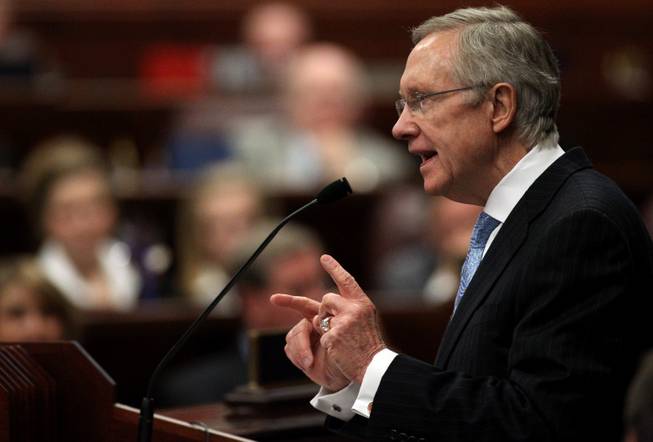
AP Photo/Cathleen Allison
U.S. Senate Majority Leader Harry Reid speaks to a joint session of the Nevada Legislature on Tuesday, Feb. 22, 2011, at the Legislature in Carson City.
Thursday, Feb. 21, 2013 | 2 a.m.
Six years ago, Harry Reid became the Senate majority leader after a bumper crop of fresh-faced politicians, most of them Democrats, won their elections on a promise to shake up Washington’s old ways.
No one quite anticipated back then how much the idea would catch on.
In Reid’s term as majority leader, the Senate has been going through a massive cultural shift, as retirements, lost contests and deaths have picked off many of the Senate’s longest-serving lifers. Replacing them is an ever-growing group of rookie representatives, whose relative newness is turning the Senate’s traditional seniority-based hierarchy on its ear.
Compared with six years ago, senators are logging far fewer career years in Washington but acting no less partisan. The new blood has made the Senate more diverse — but not really any younger.
The Senate’s new makeup also has helped change longstanding traditions. Subcommittee chairmanships, once a years-long goal, are now being doled out to lawmakers with less than two years service. Certain earned perks of putting one’s time in — such as preferred access to earmark money — were eradicated in the last session, as newer lawmakers argued against the system. And with the Senate primed to receive even more freshmen — already five senators have said they won’t run for re-election in 2014 — more changes are surely in store.
Here’s a look at seven ways turnover has altered the Senate since Reid took over:
-
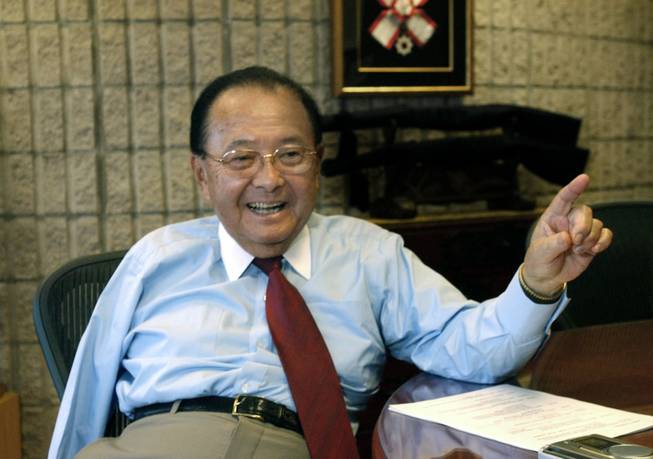
Sen. Daniel Inouye
Why so much turnover?
The ebb and flow of the Senate is measured in political cycles. Senators serve for six years, but every two years, about a third of them have to defend their seats — and each time, a few incumbents are invariably ousted. Still, the eight general election defeats and three primary upsets that took place under Reid’s reign aren’t enough to explain why the Senate’s seniority has shrunk so dramatically.
Since the start of Reid’s leadership term, the Senate also has lost some members to the natural ebb and flow of life.
Three lions of the Senate — Ted Kennedy, Robert Byrd and most recently Daniel Inouye — have died in office. Nine more members have resigned, to pursue new opportunities further west along Pennsylvania Avenue (as Barack Obama, Joe Biden, Hillary Clinton, Ken Salazar and John Kerry did), to escape personal scandal (as Trent Lott and John Ensign did) or simply to take their careers in a different direction (as did Jim DeMint and Mel Martinez).
But the bulk of the turnover has come at the hands of retiring senators. Twenty-seven of them, to be exact, since Reid’s term of leadership began.
-
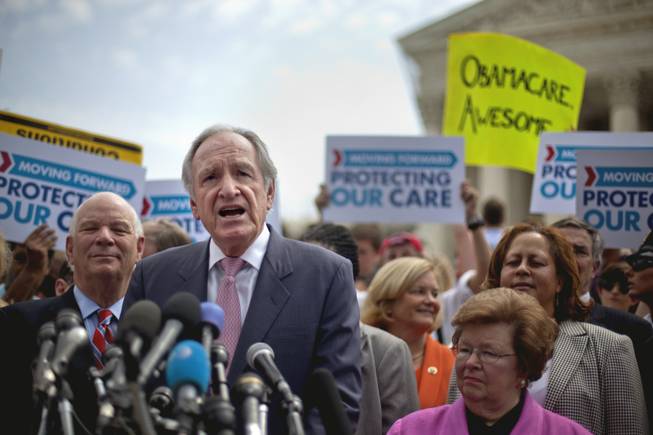
Senate Health, Education, Labor and Pensions Committee Chairman, Sen. Tom Harkin, D-Iowa, center, flanked by Sen. Benjamin Cardin, D-Md., left, and Sen. Barbara Mikulski, D-Md., speaks outside the Supreme Court in Washington, Thursday, June 28, 2012, after the court's ruling on President Barack Obama's health care law was announced.
Career representatives no more?
On the first day of the 110th Congress, the average senator had about 13 years experience — more than two full Senate terms. Today, the average senator only has about 9 1/2 years of experience, and once Sens. Saxby Chambliss, Tom Harkin, Frank Lautenberg, Mike Johanns and Jay Rockefeller retire, that average will further decline.
Almost half of the senators currently serving — 45, to be exact — actually have less than a full term of Senate experience. Nearly three-quarters of senators have less than two full terms of experience. Even the number of lifers has dipped: In 2007, at the start of Reid’s majority leader term, there were 30 senators who had served at least three Senate terms. Today, there are only 18 such career senators around.
The trend is good news for advocates of term limits and those who believe politicians can become out of touch, even corrupt, the longer they stay in Washington. But the lack of history between fellow lawmakers also breeds a lack of cross-party familiarity, which may explain some of the increasing gridlock.
-
Republican Dean Heller and Democrat Shelley Berkley, candidates for Nevada's U.S. Senate seat, debate on "Ralston Reports" at the KSNV-Channel 3 studios Monday, Oct. 15, 2012.
Partisanship will prosper
A younger Senate isn’t necessarily a Senate free of entrenched Washington divisions.
In the past decade, Congress has all but lost its center, that zone where Democrats and Republicans once would do-si-do across the party line. Less than a quarter of the Senate experienced those less partisan times.
An analysis of voting records compiled by The Washington Post shows that senators are voting with their party with almost the exact same frequency — about 90 percent of the time — as they did in the congressional term before Reid became majority leader.
An averaging of the National Journal’s partisanship rankings from 2006 and 2011 show the same static partisanship, with Republicans and Democrats voting predictably “conservative” or “liberal” about three-quarters of the time.
-
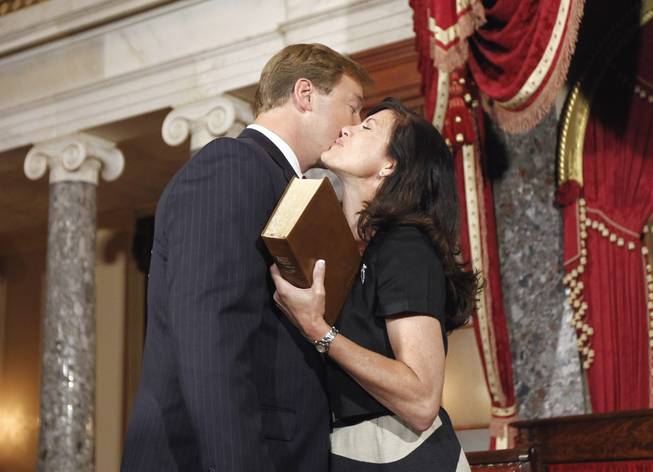
Sen. Dean Heller, kisses his wife Lynne Heller in the Old Senate Chambers on Capitol Hill in Washington, Monday, May 9, 2011, prior to his mock swearing ceremony. Heller was 50 at the time.
The more things change, the more they stay the same
Senators may be spending less time in Washington, but the body isn’t getting younger.
Senators in the 113th Congress are only one year younger, on average, than they were at the start of Reid’s majority leadership in 2007 — the average age is 60. Partly, that’s because lawmakers have been starting their Senate careers at an older age.
The class of senators who started their terms in 2007 averaged about 54 years old on the first day. In 2009, the average age of the freshmen senators was 55. In 2011, it was 59.
This year, a few spring chickens hovering about the innocent age of 40 are bringing down that average to 52. If the very recent trend of younger candidates winning Senate terms holds, the body could restore some of its former longevity in the next few decades.
The trend suggests the era of 30-year careers in the Senate is long past. Lawmakers just don’t seem to want to hang around until they are part of the octogenarians club anymore. In 2007, there were six of them, but now the only one left in the Senate is Lautenberg — and he’s on his way out in 2014.
-

Personal wealth
Senators are entering the Senate older, many of them after having had a first career. No wonder, then, that senators appear to be getting slightly wealthier. Slightly.
According to numbers compiled by opensecrets.org, the average net worth of a senator was just shy of $2 million in 2006. In 2011, it was $2.1 million.
Those figures may start to come down soon, however, as they do not reflect the recent retirements of some of the richest senators: department store magnate Herb Kohl and ketchup empire spouse John Kerry were both worth a few hundred million each. Disclosure forms are due in the late spring.
-
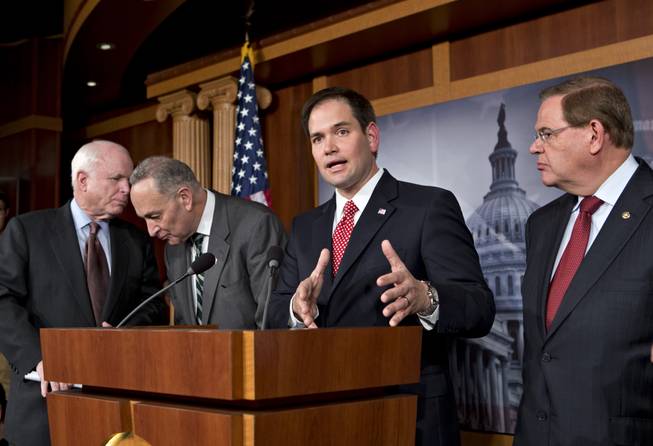
Sen. Marco Rubio, R-Fla.. center, answers a reporter's question as a bipartisan group of leading senators and he announce that they have reached agreement on the principles of sweeping legislation to rewrite the nation's immigration laws during a news conference at the Capitol in Washington, D.C., on Monday, Jan. 28, 2013. From left are Sen. John McCain, R-Ariz., Sen. Charles Schumer, D-N.Y., Rubio and Sen. Robert Menendez, D-N.J.
More diversity
Senators may be rich, but at least they no longer totally fit the stereotype of old monied white men.
Okay, so the Senate is still 94 percent white. But for the first time, it is also 20 percent female. And for the first time in a long time, the country’s largest ethnic majority groups are represented by three Hispanic senators (Ted Cruz, Marco Rubio and Bob Menendez), two black senators (Tim Scott and Mo Cowan) and Asian-American Mazie Hirono. Tammy Baldwin is also the first openly gay member of the Senate.
-
Candidates Dina Titus, from left, Steven Horsford, Rep. Shelley Berkley D-Nev., Nevada State Democratic Party chair Roberta Lange, and John Oceguera pose for a photo during a primary election night party at the new Nevada Democratic Party Field Office in Henderson on Tuesday, June 12, 2012.
But less geographic diversity
While the Senate may reflect slightly more social diversity in the chamber, politically, the senate is becoming more geographically concentrated. A few years ago, Republican and Democratic senators were fairly evenly sprinkled across the country. But the parties are concentrating along the coasts, leaving the Midwest as the only truly mixed political bag of Senate representation. Check out these maps of the 110th Congress and 113th Congress to see what we mean.


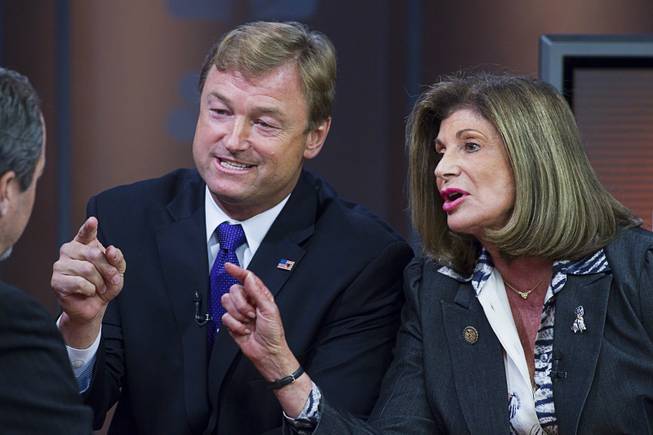



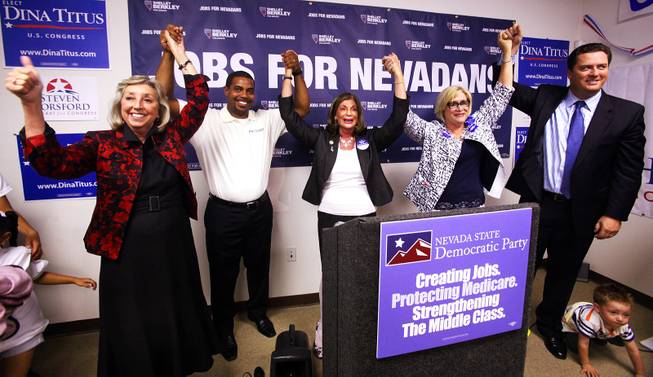

Join the Discussion:
Check this out for a full explanation of our conversion to the LiveFyre commenting system and instructions on how to sign up for an account.
Full comments policy